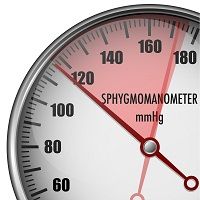Article
More Intensive Blood Pressure Goals Reserved for Most Severe Kidney Disease: KDIGO
Author(s):
Recent updates by the 8th Joint National Committee (JNC 8), the American and International Societies of Hypertension (ASH-ISH), and KDIGO recommend target blood pressure of less than 140/90 mm Hg for most individuals, including those with CKD.

Attendees at an international kidney disease conference heard updated recommendations for optimal blood pressure (BP) control for patients with chronic kidney disease (CKD). George Bakris, MD, Professor of Medicine and Director of the ASH Comprehensive Hypertension Center at the University of Chicago, led off a hypertension-focused session. Bakris reviewed the Kidney Disease Improving Global Outcomes (KDIGO) recommendations for BP control in kidney disease, including recommendations for end-stage renal disease (ESRD), on November 15 during Kidney Week 2014 in Philadelphia.
Recent updates by the 8th Joint National Committee (JNC 8), as well as the American and International Societies of Hypertension (ASH-ISH) recommend target BPs of less than 140/90 mm Hg for most individuals, including those with CKD. These bodies, together with KDIGO, reached that target after reviewing data from the three available randomized trials of the effect of blood pressure control on the progression of CKD. Bakris thus noted that the KDIGO guidelines were formed in the absence of randomized trials directly addressing what BP goal is best for those with diabetic nephropathy.
For each recommendation, KDIGO assigned a grade for quality of evidence ranging from A to D. For A-level evidence, KDIGO is “confident that the true effect lies close to that of the estimate of the effect,” while at the lower end, D-level evidence’s “estimate of effect is very uncertain and often will be far from the truth.” No KDIGO recommendation is backed by A-level evidence.
This evidence grading is paired with recommendations, which should be implemented for most patients, or suggestions, which carry less weight and mean that “different choices will be appropriate for different patients.”
Lifestyle modification recommendations include maintaining a healthy weight, exercising, and limiting sodium intake to two grams/day or less. Any alcohol intake is also suggested to be modest.
For patients who have diabetes and CKD but minimal albuminuria (<30 mg/24 h), the recommended target BP is 140/90 mm Hg. However, when albuminuria exceeds that level, the suggested target drops to 130/80 mm Hg in the KDIGO guidelines, and an angiotensin-converting enzyme inhibitor (ACEI) or an angiotensin II receptor blocker (ARB) is suggested as first-line therapy.
For individuals with non-diabetic kidney disease and albuminuria <30 mg/24 h, the recommended target BP is also 140/90 mm Hg. The suggested hypertensive therapy target for individuals with non-diabetic kidney disease and albuminuria of >/=30 mg/24 h is 130/80 mm Hg, with an ACEI or an ARB suggested for the 30-300 mg/24 h albuminuria range and recommended for albuminuria >300 mg/24 h.
Kidney transplant recipients have a suggested BP goal of <130/80 mm Hg, regardless of the presence or degree of albuminuria. Antihypertensive therapy in the post-transplant population must be individualized according to comorbidities, immunosuppressive regime, and time post-transplantation.
Similarly, more elderly patients with CKD and hypertension will need to have individualized regimens with careful attention paid to comorbidities, adherence challenges, fall risk from hypotension, and the potential for drug-drug interactions.
BP management for children with CKD but without diabetes is recommended to begin when readings consistently exceed the age/sex/height-matched 90th percentile, and suggested to target the 50th percentile, unless signs or symptoms of hypotension occur. An ACEI or ARB is the suggested first-line treatment.
In an interview after the presentation, Bakris emphasized that there is “fundamentally no major disagreement” between nephrologists and the general international and US hypertension communities about optimal BP control. “The evidence,” he said, “is the evidence.”




